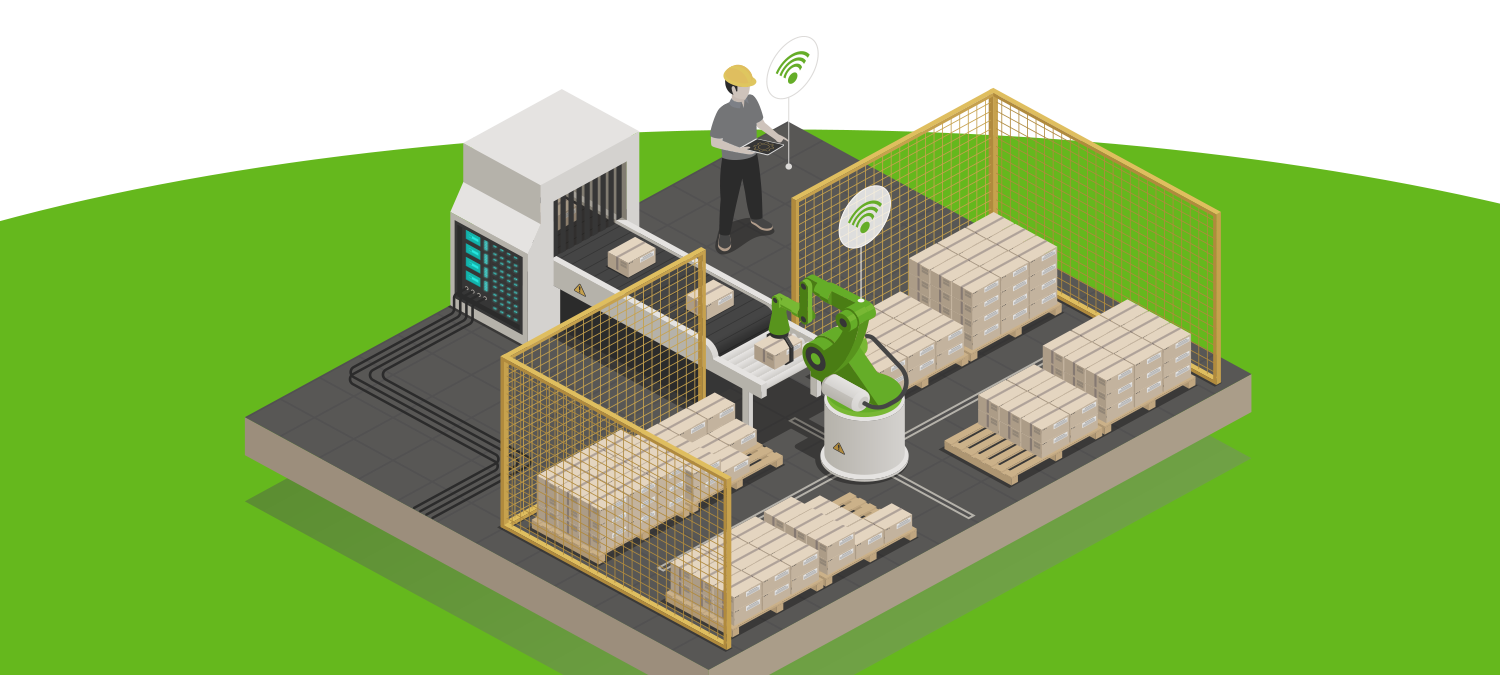The secret to successful ecommerce lies not only in what you sell but also in how quickly you can process and deliver orders to the customer. Every lost second can mean a missed opportunity. According to data from 2023, 24% of consumers abandoned their purchases due to slow delivery.
Ecommerce fulfillment automation is becoming not only a strategic necessity but also a source of competitive advantage. From small startups to large online retailers, it can help every business reduce fulfillment costs, accelerate the order processing process, and, as a result, increase revenues.
In our article, we will take a closer look at what automated order fulfillment is, the advantages it offers to companies, and the technological solutions that can be applied for more efficient and speedy customer service.
- What is Automated Order Fulfillment?
- Advantages of Order Ecommerce Fulfillment Automation
- How to Automate Order Fulfillment in Ecommerce?
- Ysell.pro – A Comprehensive Solution for Automating Your Business
What is Automated Order Fulfillment?
Automated order fulfillment is the process of implementing modern technologies and software solutions for full or partial automation of order processing in ecommerce. This process includes inventory management, order processing, choosing the best delivery methods, generating invoices, tracking the status of orders and communicating with customers.
The main goal of automating is to simplify and optimize each stage of order fulfillment, minimize manual labor and reduce the likelihood of human errors.
Speed and efficiency are key factors for success in ecommerce companies. Automation will allow you to increase operational efficiency, reduce operating costs, and improve the customer experience. It also provides the ability to quickly respond to changes in market conditions and remain competitive.
Advantages of Order Ecommerce Fulfillment Automation
E-commerce is rapidly evolving, and as it does, consumers are becoming increasingly demanding. Companies have to adapt to changing conditions in order to meet customer expectations and remain competitive. Automation can help your company not only gain a competitive edge but also reap a range of other benefits. What are these advantages? Let’s explore them further.
Warehouse management optimization
Automated systems can closely monitor inventory levels and demand dynamics in real-time. This allows your company to avoid excess or insufficient stock, thus reducing associated costs.
By tracking inventory levels, the system can automatically initiate orders for new products from suppliers, reducing delays and ensuring a constant availability of popular items in the warehouse.
Warehouse management system will also allow you to optimize the utilization of physical space in the warehouse. This means more efficient product placement, reduced time spent searching and preparing for delivery, and streamlining loading and unloading processes.
Furthermore, automating fulfillment will increase the productivity and efficiency of warehouse staff, reducing the risk of human errors. It will free them from routine tasks, allowing them to perform their duties more efficiently.
Cost reduction in operations
This significant advantage has a positive impact on the financial aspect of the business and can lead to substantial resource savings. In 2022, approximately 53% of companies were able to reduce operational costs thanks to automated order fulfillment.
Firstly, demand monitoring and analysis systems will allow you to predict needs and avoid excess inventory. This reduces costs related to storing goods and operational expenses.
Secondly, processes that were previously done manually can now be automated. The company can reduce the number of employees needed for routine tasks, thus lowering labor costs.
Thirdly, automated order fulfillment will help reduce errors, and therefore, the additional costs associated with correcting them. In addition, you can decrease packaging and logistics costs by optimizing packaging processes and selecting the most cost-effective delivery services.
Swift order processing and delivery
Automation will reduce the time required for order processing. This is achieved through the automatic processing of information, invoice generation, the creation of picking and packing lists, and many other tasks that previously demanded a significant amount of time and human effort.
Fast processing will allow your company to expedite the delivery process and provide customers with shorter waiting times. You will obtain more accurate and efficient order routing and be able to choose optimal delivery methods. This will reduce transportation time and enable you to offer customers various options, including express delivery, which will further meet different customer needs.
Improving service quality
Ecommerce fulfillment automation has the capacity to minimize errors in order processing, invoicing, and delivery processes. This significantly reduces the risk of customer dissatisfaction and establishes the foundation for long-term, mutually beneficial relationships with them.
Automated systems reduce order processing time and expedite delivery. Customers value efficiency and reliability, and when they receive their orders quickly and without delays, they are more inclined to make repeat purchases and recommend the brand.
In addition, automation allows providing customers with real-time information about product availability, order status, and delivery timelines. This reduces misunderstandings and customer disappointments, strengthening their trust in the company.
Furthermore, it can support a personalized approach to customers, adding individuality to service and creating deeper customer relationships.
Increasing sales
The speed of order processing and a high level of service will contribute to attracting new customers and convincing existing ones to make repeat purchases. Satisfied customers will not only become loyal repeat buyers themselves but also recommend your company to others. This will help expand your customer base and increase sales.
Additionally, with personalized offers and recommendations, you can increase the average order value and encourage customers to purchase additional items.
Flexibility and scalability
Automated ecommerce fulfillment provides businesses with the ability to adapt to changing market conditions. It allows you to quickly respond to process changes, optimize them, and implement new strategies without significant reconfiguration costs.
Automated systems will facilitate more efficient growth management, allowing for the expansion of production, warehouse space, and customer base. This is especially important in the ecommerce industry, where demand can change suddenly and unexpectedly.
How to Automate Order Fulfillment in Ecommerce?
Order fulfillment in ecommerce encompasses the processes of assembling, packaging, and delivering orders to customers. Modern technologies offer companies unique opportunities to optimize and streamline each stage of the order fulfillment process, from order reception to the final delivery to the customer’s doorstep.
Receiving and storing goods
Receiving and storing goods are critically important stages of ecommerce order fulfillment. Before offering a product to the customer, you need to receive it from the supplier, sort it, and place it in storage. Automated systems can make this process more efficient and accurate.
Automating all warehouse processes can be facilitated by a Warehouse Management System (WMS). A WMS automatically registers the arrival of new goods in the warehouse by scanning barcodes or RFID tags. This eliminates the need for manual data entry and reduces the risk of errors.
A Warehouse Management System (WMS) enables your company to have real-time, up-to-date information about the availability of products, their locations, and their statuses. This allows for more effective inventory management, helping you avoid overstocking or understocking of products.
Order processing
After a customer places an order on the website, it needs to be processed and forwarded to the warehouse for subsequent picking and shipping. This task becomes particularly challenging for companies that handle large volumes of orders daily.
Order Management System (OMS) automates the process of order intake, registration, and confirmation. It integrates with inventory management systems, enabling the real-time verification of product availability and their reservation for orders. Additionally, the system allows for centralized order management across different sales channels.
As a result, orders are processed more quickly, and the likelihood of data errors is minimized, contributing to a higher level of customer service.
Order picking
Even with qualified personnel, maintaining high accuracy in the processing of a large number of orders can become a challenging task. Companies dealing with such high volumes require automated order picking methods.
Warehouse staff use barcode scanners to identify products. This information is automatically cross-referenced with the orders in the Order Management System (OMS). The OMS keeps track of the contents of each order and marks items as picked, streamlining the picking process.
Automation systems can optimize the routes of warehouse staff, directing them to the shortest path to items and picking locations. This saves time and increases the efficiency of picking. In some cases, warehouse employees can even use voice instructions that guide them to the correct items and quantities for picking.
In the case of large warehouses with a high volume of orders, automated conveyors and feed systems can be used to transfer items to the picking area. This further reduces the need for manual item movement.
Order packaging
Automated label and packing list generation and printing during the packaging stage are another important aspect of warehouse management systems. This reduces the likelihood of errors because the information on labels and lists precisely matches the order data. The documents can also include information about the delivery method, recipient’s address, and other crucial details, simplifying the subsequent process of shipping the goods.
Order management systems can automatically select packaging and materials based on the order’s characteristics. Additionally, automated systems can help optimize the packaging process. This allows for a more efficient use of space in shipping vehicles and reduces delivery costs.
Order delivery
One of the key aspects of automating the delivery stage is route optimization. Route optimization software takes into account various factors such as customer locations, road accessibility, current traffic, and even weather conditions. This allows for finding the optimal routes for each delivery, reducing both time and costs.
The use of GPS systems and real-time monitoring helps companies and customers track the location of goods throughout the entire journey from the warehouse to the destination. This increases transparency and allows for adjustments to the route in case of unforeseen situations.
Additionally, automated systems can integrate with logistics and courier services. This enables the automatic transmission of information about orders and delivery routes, reducing the time required for shipment processing.
Ysell.pro – A Comprehensive Solution for Automating Your Business
Ysell.pro offers a comprehensive solution for effectively order ecommerce fulfillment automation. From order processing on your website to picking, packing, and delivering to the customer, you can ensure complete control and efficiency at every stage of fulfillment.
Here are some of the key features of the platform:
1. Real-time Inventory Management
With Ysell.pro, your company can keep track of and manage inventory in real-time, regardless of how many warehouses you have. This allows you to have full control over product availability and optimize their distribution.
2. Order Management
The platform offers complete control over order fulfillment, from order intake to shipment. You can track the status of each order, coordinate all processes, and automatically generate invoices for customers. The system also has the capability to provide instructions for proper assembly and packaging of each product, as well as leave notes on each order.
3. Integrations with Various Sales Channels
Ysell.pro enables centralized management of all orders, regardless of the sales channels they originate from. This simplifies the order processing and reduces the risk of errors.
4. Barcode Scanners
The platform supports integration with mobile barcode scanners for quick and accurate product scanning. This allows you to expedite the order preparation process, swiftly identify items when needed, and reduce the likelihood of errors.
5. Built-in Reports
Ysell.pro offers built-in reports and analytical tools. You’ll be able to monitor your company’s performance, analyze data from each sales channel, and make informed decisions.
6. Integrations with Shipping Services
The software can integrate with DHL, DPD, and other popular shipping services, allowing your company to optimize logistics and coordinate the order delivery process. The system also offers integration with Shipstation. You’ll be able to choose carriers with the best shipping conditions, automatically generate labels, and reduce shipping costs as a result.
The powerful toolkit of Ysell.pro will help your company increase efficiency, reduce operational costs, and meet the demands of modern consumers.
Conclusion
Indeed, meeting the high expectations of consumers is crucial for modern businesses, and order automating fulfillment can be a key solution to achieve this. Fast and accurate order processing and delivery have become the industry standard. Companies that cannot adhere to these standards risk losing customers.
Automated order, inventory, and logistics management are becoming integral to successful ecommerce operations. Companies that recognize their importance will be able to increase sales and scale in the fast-growing online retail environment.







